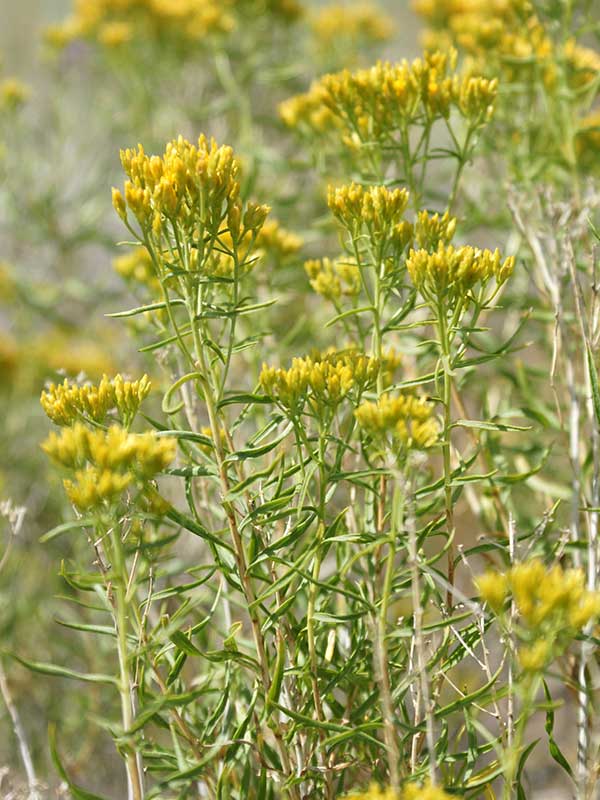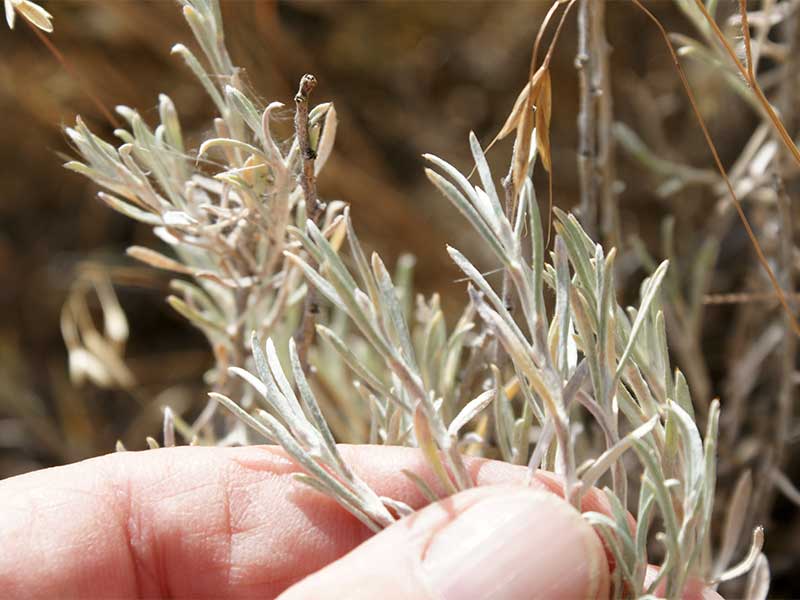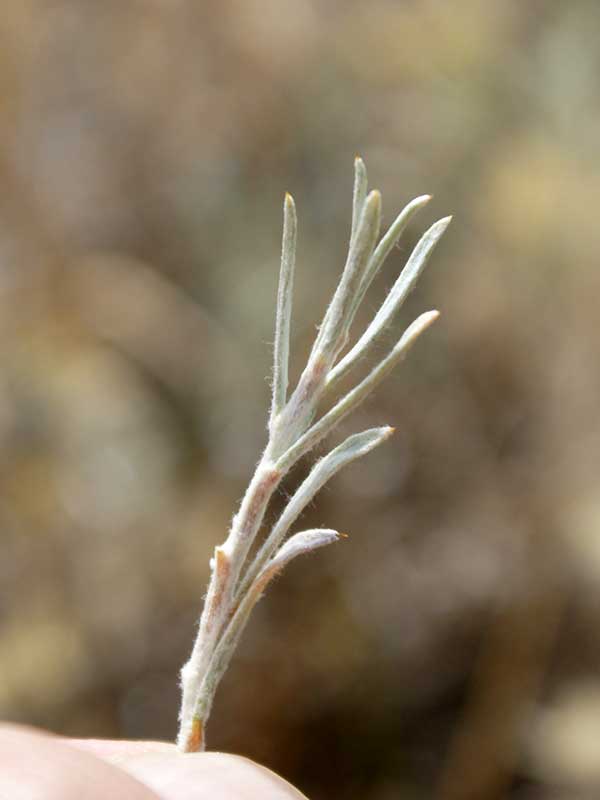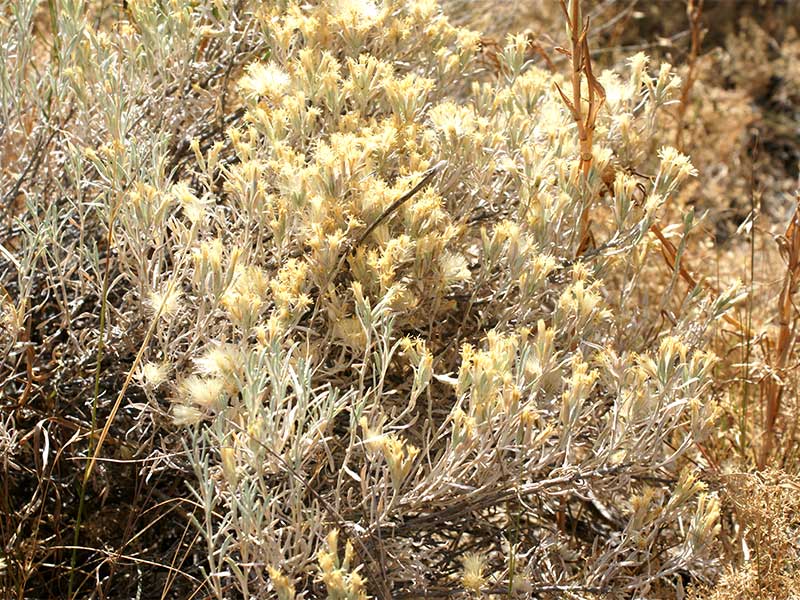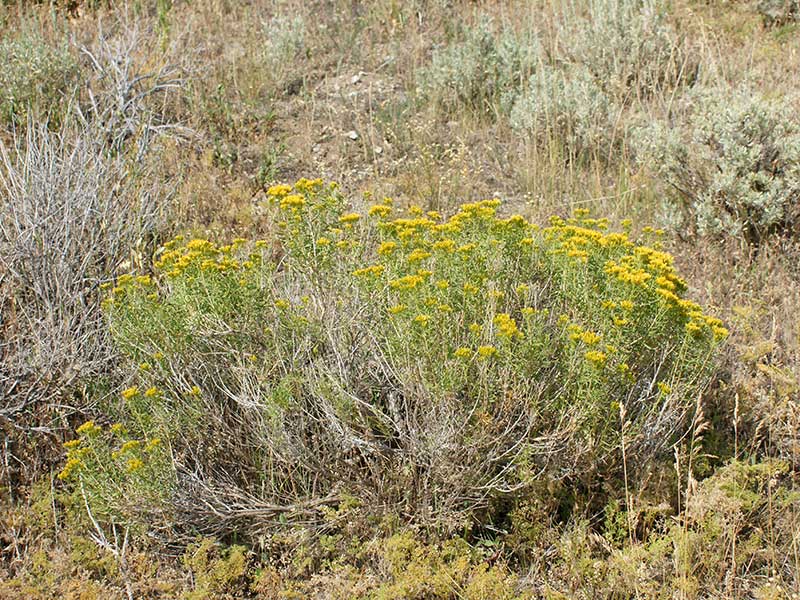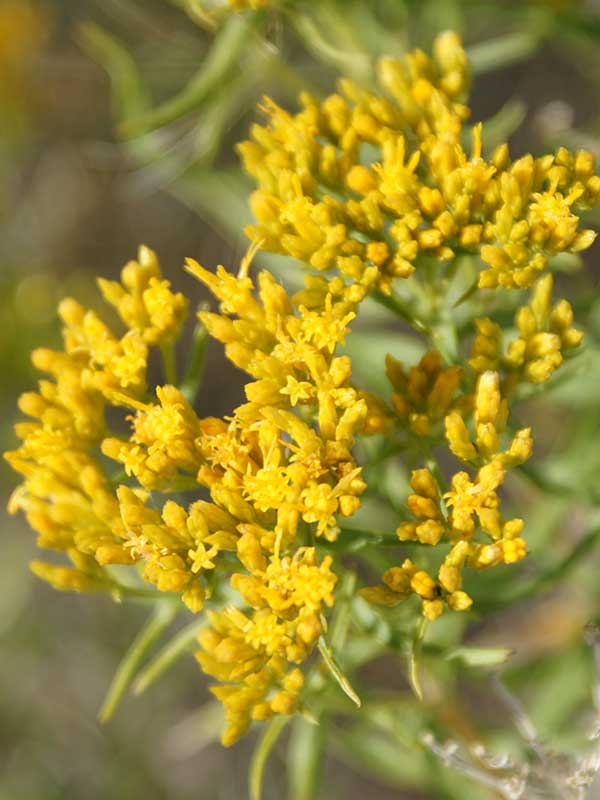Tetradymia canescens / spineless horsebrush
- shrub – up to 3 feet tall and across; round
- small, yellow composite flowers in clusters of 4 to 8
- dandelion-like seeds often present with flowers
- primary leaves short and linear; long-lived
- secondary leaves in axils of primaries are short-lived
- primary leaves are not spines
Also known as: gray (or grey) horsebrush
Spineless horsebrush is a native, deciduous, taprooted, much-branched shrub, less than 3 feet tall. It tends to be rather round, i.e. as wide as it is tall. It is largely restricted to drier sagebrush rangelands, and can be confused with various sagebrushes and rabbitbrush, especially before flowering.
Spineless horsebrush begins leaf re-growth in mid-April. The flower buds form in early to mid-June, but flowering really doesn’t happen until mid-July. This is still relatively early in comparison with associated plants, minimizing competition for pollinators. Nearly all the individuals in a colony, i.e. a clone, will flower within a period of several days. The photos in the gallery were taken in mid-August, with only a few flowers remaining. It is also at this time that the seeds ripen. Completing the phenology, leaf drop occurs in early October.
The flowers on this shrub are borne in terminal clusters of 3 to 8 flower heads. Each head has 4 hairy, lance-shaped bracts and 4 yellow or cream disc florets. The shrub is monoecious with perfect flowers. The florets are surrounded by up to 150 white or light brow pappus bristles. The spineless horsebrush is pollinated by a range of generalist insects, including moths, bees, flies and beetles.
Although seed production is very high, seedlings are rare except following fire. Even in that case, however, root sprouting after top removal will dominate recolonization.
Both the flower bracts and the leaves of spiny horsebrush are covered densely with white hairs, almost wooly. This gives the plants a grey-white color. The stems are likewise hirsute but with hairless strips at intervals along the branches.
In general, horsebrushes of all species have primary and secondary leaves. Primary leaves are alternately arranged along the stems and usually are long-lived. Secondary leaves develop in the axils of primary leaves and usually dry up within a few weeks. In both cases, the leaves are more or less linear. They are only about 1.5 inches long which is a definite distinction from rabbitbrush. The leaves tend to angle upwards and remain close to the stem.
Most sources point out that the leaves of spineless horsebrush are not spiny. This contrasts with cat-claw horsebrush (is that a mixed metaphor?) where the primary leaf is a spine. It is a distinguishing feature.
Interesting bits –
One of the sidelights of being fire resistant is that the overall abundance of spineless horsebrush is decreased by fire suppression efforts and increased by frequent burning. In a fire, the shrubs are top killed, but they re-sprout from the roots. Germination of seeds, especially those blown into the fire area, also contributes to the spread.
Spineless horsebrush is generally considered worthless for livestock browse and provides poor to fair cover for wildlife. Pronghorns, mule deer and feral cattle and horses may browse it sparingly in the winter if other feed is scarce but it’s poor quality at best – except during bud enlargement and burst in spring when it’s slightly higher. However, during this stage especially, it is extremely toxic to sheep. Besides liver failure, one “interesting” pathology is that associated with exposure to bright sun after eating it. This involves swelling of the lip, ears and face and is commonly referred to has “bighead” syndrome. Hence, if you are a sheep, or know any, best to keep them away, especially if the availability of other forage is low.
If the abundance gets too high – in the sense that a rancher or land manager might want to reduce it – growth from the taproot, herbicide insensitivity and fire resistance make spineless horsebrush hard to eradicate.
| Color | |
|---|---|
| Family | |
| Blossom size | |
| Inflorescence size | |
| Inflorescence type | |
| When? | |
| Where? |
